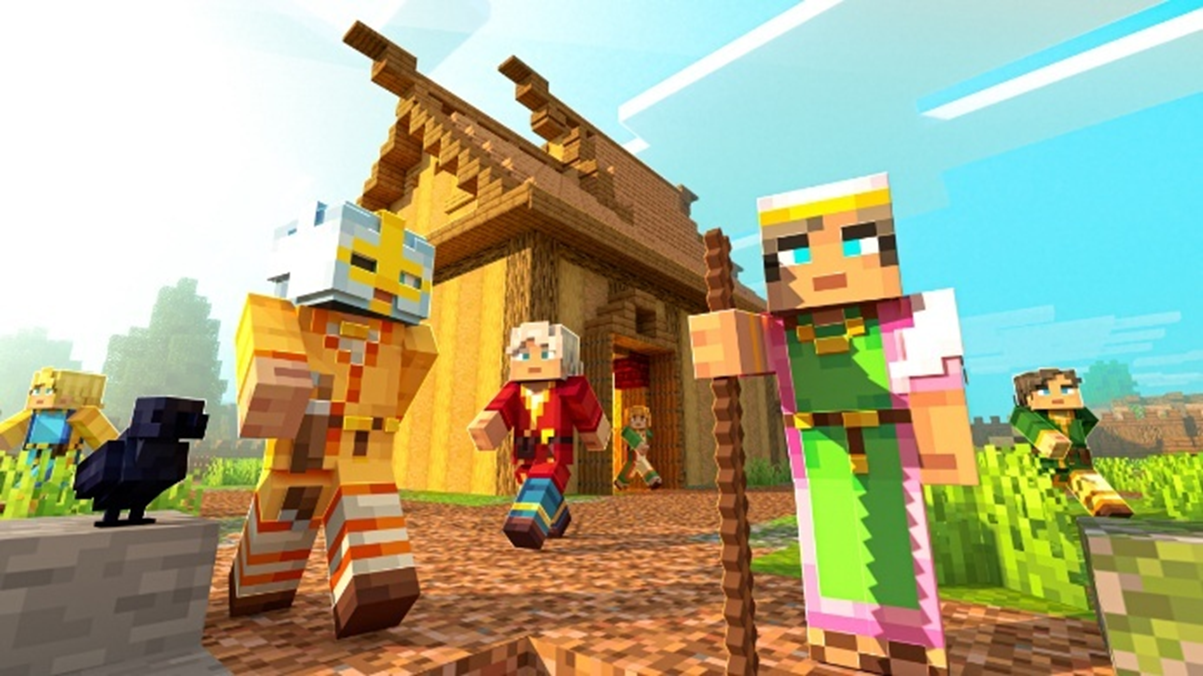Inviting students to explore 1,000 years of Uppåkra with Minecraft Education

In southern Sweden, Uppåkra Stiftelsen is bringing history to life using Minecraft. Time Travel at Uppåkra invites children in Sweden and worldwide to experience an active Iron-Age archeological excavation site through the interactive mining game Minecraft. With help from developers and funding from Microsoft Community Affairs, the Sparbanken Skånes Arkeologiskola has created a virtual Uppåkra rendered in Minecraft bricks. Schoolchildren worldwide can explore Uppåkra as a present-day archeological discovery and a significant historical site dating back 1,100 years, guided by archeologists and scientists present in the game as non-playable characters (NPCs).
Imagining Uppåkra through the ages, brick by Minecraft brick
Sparbanken Skånes Arkeologiskola brings the history of Uppåkra to life for schoolchildren in Minecraft. Sofia Winge, Uppåkra archaeologist and founder of the school, explains: “This is a unique collaboration where kids are inspired to read and learn about a fascinating historical site like Uppåkra—within the world’s most-played game.”
Entering into the Uppåkra Minecraft world, student gamers meet the NPCs of archeologists at the Uppåkra site and scientists from the Uppåkra Foundation’s Scientific Board. These characters share information and guide students in various quests related to significant historical periods in Uppåkra’s history dating back to the Iron Age (100 BC–1000 AD), when Uppåkra rose to prominence as a cultural epicenter. Players can also interact with the real-life archeologists by sending messages or booking a meeting.
With the guidance of NPCs currently involved in the dig, the children excavate in Minecraft, find artifacts from real-life Uppåkra, and learn how archeologists work with experts from other disciplines to gain knowledge about the history of Uppåkra. As they unearth significant finds, players travel to different time periods of Uppåkra, from the Iron Age to the Roman period to the Viking age to the present. There are seven quests in total, each presenting the finds in context so children can imagine and learn about Uppåkra’s storied past.

Working with local youth to develop Time Travel at Uppåkra 2.0
From the start, Time Travel at Uppåkra has been developed in collaboration with the game experts: the children who play the game. Students from Uppåkra and Jonsered school helped develop the first version of Time Travel at Uppåkra. The newest version launched this year is the product of a yearlong collaboration with a Youth Advisory Board and students from the Barsebäck Montessori school. The Youth Advisory Board consists of 11 members between 6 and 13 years of age who bring various levels of experience with Minecraft. Throughout 2024, the Youth Advisory Board met regularly with the development team to evaluate Time Travel at Uppåkra and share new ideas for the game. Their insights and those of the schoolchildren were invaluable in creating the new version of the game.
Perhaps the most exciting development in the new Time Travel at Uppåkra is the collaboration with Grej of the Day (GOTD), an exciting new pedagogical approach that has been a hit among schoolchildren. Developed by educator Micke Hermansson, Grej of the Day is a Swedish micro-lesson concept based on scientific studies of how the brain works and how we learn best. “GOTD makes learning fun and memorable, sparking students’ natural curiosity and encouraging them to explore a never-ending worldwide web of knowledge,” explains Hermansson.
The three-part GOTD format involves: one, a clue for students to ponder and solve a day before the micro-lesson; two, the micro-lesson—short (no more than eight minutes), based in storytelling, and closing with a jaw-dropping fact for a closing “wow” factor; and three, a retelling opportunity, in which students relate the lesson by memory to parents or another listener. This final step closes the learning circle, the most critical step to learning.
Hermansson himself presents Grej of the Day within the new Minecraft game via his interactive NPC avatar, giving the gamer/student clues to a certain fact, followed by three micro-lessons to inspire further exploration and learning. The two pedagogical approaches, “grejing” and gaming, are a natural fit—both involve children as active participants in their learning by exciting their curiosity and imagination. Youth advisors greeted the collaboration with enthusiasm. “When can I play it? I love GOTD and Minecraft is so cool,” commented a 10-year-old advisor. Another youth advisor called on Minecraft Education developers to incorporate GOTD more broadly: “This mix (with GOTD) would be just as great in everything that Minecraft does.” Their mom observed, “Two things we already know that kids like—this cannot go wrong.”
In addition to the GOTD collaboration, Time Travel at Uppåkra includes the following exciting updates:
- New artifact. Based on a real find made by 11-year-old student Christian Emil during an excavation at Uppåkra, the updated game includes an agraff (a cuff link) that likely belonged to an elite citizen of Uppåkra more than 1,500 years ago.
- Swedish translation. By popular request from Swedish educators, Time Travel in Uppåkra is now available in Swedish language. The translation makes the game more accessible for use in local classrooms.
Check out Time Travel at Uppåkra to start your historical adventure!
Read more about the original version of Time Travel at Uppåkra: Bringing history to life with Minecraft Uppåkra – Microsoft Local.

This is a unique collaboration where kids are inspired to read and learn about a fascinating historical site like Uppåkra—within the world’s most-played game.
—Sofia Winge, Uppåkra archeologist

